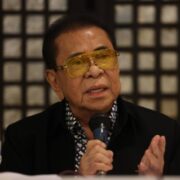Amid tariff war, PH faces flood of Chinese imports

US President Donald Trump’s sweeping tariffs on America’s trading partners could make emerging economies like the Philippines more exposed to an influx of cheap Chinese goods, which could be very disruptive to Filipino producers.
In a special report that analyzed 45 countries, Japanese investment bank Nomura said economies that experienced large increases in their shares of imports from China are generally also the ones that faced the sharpest slowdowns in manufacturing growth.
Euben Paracuelles, chief Asean economist at Nomura, said China had been flooding the Philippines with inexpensive imports even before Trump had won a second term late last year, as Beijing looks for new markets to make up for lost demand in America.
That influx, Paracuelles explained, coincided with weaker performance of Filipino manufacturers, particularly in industries like basic metals, machinery and equipment, and furniture.
That said, a prolonged US-China trade war under the second Trump administration could increase Beijing’s import penetration into non-American markets like the Philippines, suggesting higher competition for local industries.
“Based on our analysis in the report, the Philippines has been relatively more exposed to the flood of China imports, with the rising share of manufactured imports from China over 2018-2024,” Paracuelles said.
Disinflation
In his “Liberation Day” announcement on April 2, Trump had unveiled a 17-percent “reciprocal” tariff on Filipino goods coming to America, among the lowest in Asia. But Trump later announced a 90-day tariff pause, while retaining the 10-percent universal duty on all trading partners of the United States and the punitive taxes on Chinese goods.
Nomura said a surge of cheap Chinese goods in markets like the Philippines could “intensify” disinflation. This, Paracuelles said, could allow the Bangko Sentral ng Pilipinas to further cut interest rates and support the economy amid tariff-induced headwinds.
Moving forward, Paracuelles said the government must ramp up its spending and implement key reforms to boost the local manufacturing sector.
“Continuing structural reforms to boost competitiveness will be key, including measures to diversify the manufacturing base that efficiently leverages on the country’s comparative advantage and to reduce operating costs, including power rates and ease of doing business,” he added.





















